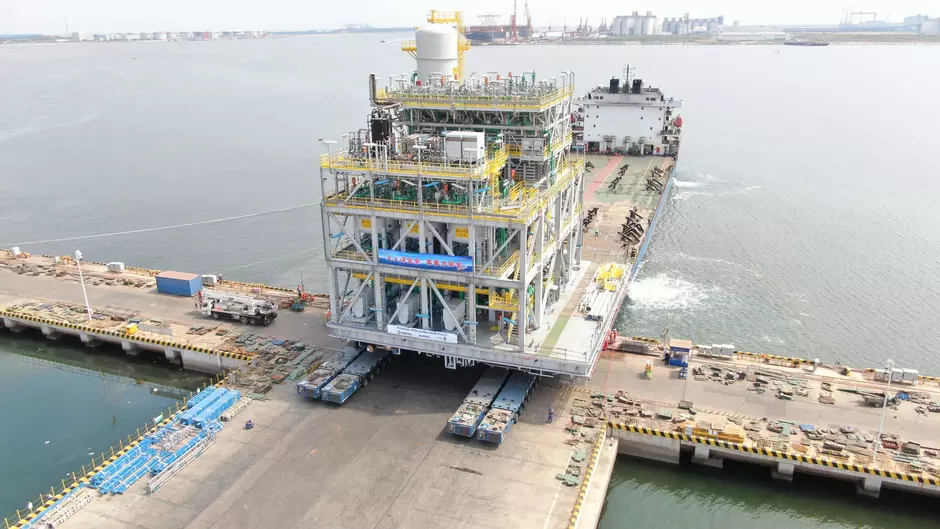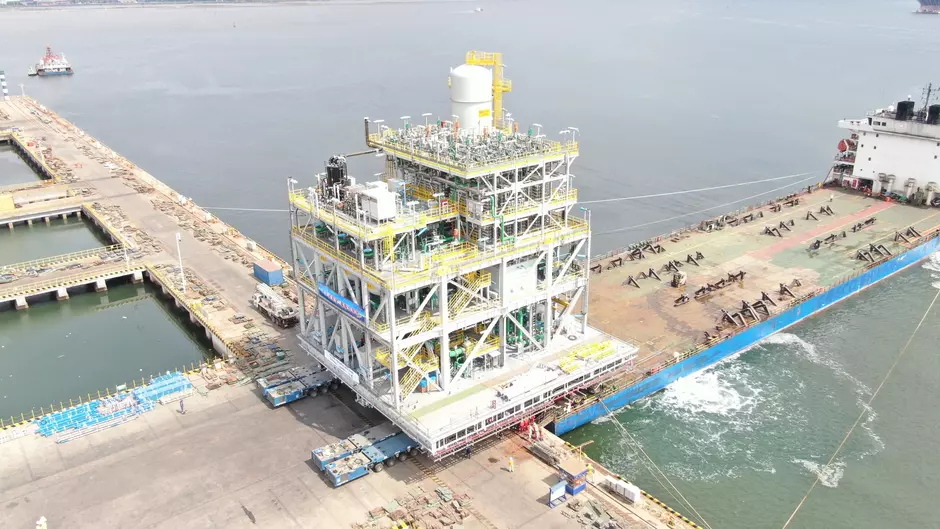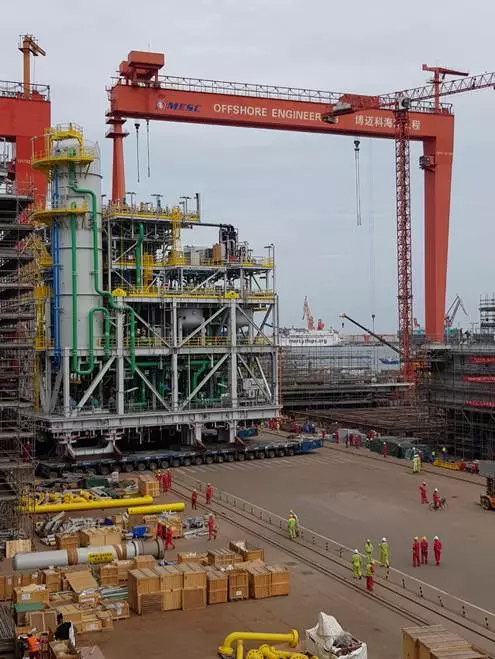Client: MODEC
Process: Seawater Treatment
Country: Sepia Field Offshore - Brasil
Contract Date: October 2018
Contract Completion Date: June 2019
Plant Capacity: 265,000 BPD / 44 540 m3/day
Sea Water Conversion: 75%
Sea Water Feed Quality
- TDS: 35,177
- Sulphate: 2,800 mg/l



Project Description:
The project is for the design and equipment procurement of a seawater treatment process module, with construction of the Sulphate Removal membrane rack, and the provision of technical support for the main module construction, for a seawater treatment plant sized for 280,193 BPD (44,544 m3/day) of low sulphate injection water for the Carioca FPSO that will operate in the Sepia Field, offshore Brazil.
Project Scope:
The project scope consists of a single process module comprising SRP skid, membrane pressure vessels, piping and valves, electrical and Instrumentation and steel structure, coarse strainers, multi-media filters, air scour blowers, HP pumps, SRP cartridge filters, booster pumps, control system, deaerator tower, vacuum skid, CIP filter, CIP pumps & CIP tanks
Process Description:
Automatic backwashable seawater coarse strainers remove particulate matter from the feed stream to the SRP plant nominally down to 80 microns (98% removal). The filtered seawater from seawater coarse strainers is used as source water for the water injection system and SWRO plant (by others). Note that as per RFQ, the SR system is designed to produce sufficient water for injection and SWRO plant.
Coarse filtered water is routed to the Multi-Media Filters that remove the majority of particulates 3 microns or greater.
Parallel operating Cartridge Filters, each containing 5-micron (absolute) replaceable polypropylene elements provide the final required particulate filtration prior the SR membranes.
The filtered seawater is routed to the suction of the Sulphate Removal Unit Feed Pumps to boost the pre-treated water to the required feed pressure for the membranes. Three SR Feed Pumps (2 duty & 1 spare) operate in parallel. Antiscalant is dosed into the common suction piping of the Sulphate Removal Feed Pumps, decreasing the scaling tendency by limiting the formation of sparingly soluble salts in the membrane system. A non-oxidizing proprietary biocide for treating the nanofiltration membranes is also periodically batch dosed into the common suction piping of the Sulphate Removal Feed Pumps. Finally, SBS is also dosed into the common suction piping of the Sulphate Removal Feed Pumps to remove the residual chlorine present in the seawater to prevent irreparable damage to the nanofiltration membranes.
The seawater flows to five parallel operated Sulphate Removal Units (SRU) to achieve the specified sulphate level of <50ppm.
The feed pressure to each SRU is controlled based on the permeate flow set point. The SRU produces 75% of the feed flow as low sulphate permeate Seawater. The low sulphate SW from each SRU is merged and then directed to the vacuum deaerator. The remaining 25% of the feed flow ends up as high sulphate content reject seawater and is directed overboard.
The SRP treated seawater then enters the Vacuum Deaerator to remove dissolved oxygen from the water. Oxygen scavenger is dosed to the sump of the deaerator to chemically reduce the remaining oxygen to levels of 10ppb or less.
Deaerated, low sulphate injection water from the deaerator is routed to 3 x 50% water injection booster pumps. These pumps are provided to boost the feed pressure to the downstream water injection pumps via the cooling water heat exchangers (all provided by others) to 11 barg.
A SR membrane clean in place (CIP) system for the SR trains is also included. Each CIP Tank capacity is designed for a one complete train of SR membranes. CIP Pumps and cartridge filter are designed for cleaning of 1st stage of one SRP train. CIP Heaters are provided for each CIP tank and heater is sized to heat up cleaning solution volume of one train (i.e. 1st stage) within 2 hours.


